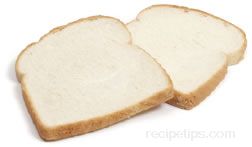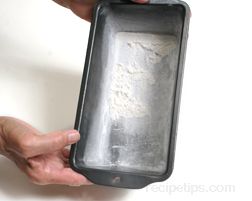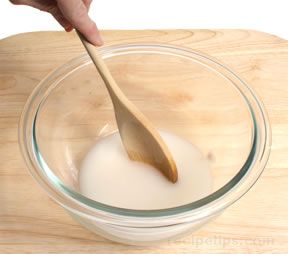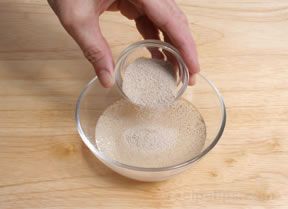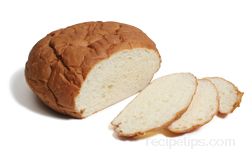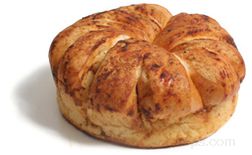Loading
Bread
A baked food item consisting of flour or meal as the main ingredient, mixed with liquid ingredients such as milk or water and eggs to form a dough. Yeast is often added as a leavening agent. Many other types of ingredients can be added including herbs and spices, depending on the type of bread desired.
Storage Tips
For extended storage, all types of bread should be kept away from heat, excessive cold, and not be allowed to remain fully open to the air for long periods of time. Different types of bread should be stored in different ways. All breads should be stored in cool dry locations. Hard crusted breads, such as baguettes, need some air to keep the crust hard, so store crusty breads in paper, which allows the bread to breathe. Plastic bags can be used to store the softer, enriched breads and rolls so the air does not cause them to dry out. Placing bread in a refrigerator will cause it to dry out faster, however freezing bread is a good way to preserve the bread. Bread stored in a freezer can be wrapped in plastic bags, but the air trapped in the bag will eventually cause freezer burn to the bread. It is best to wrap the loaf in plastic wrap, first enclosing it end to end with one section of wrap and then wrapping another sheet around the body of the loaf, side to side. Plastic wrap seals the air in and assists to keep the texture of the bread well protected.
For extended storage, all types of bread should be kept away from heat, excessive cold, and not be allowed to remain fully open to the air for long periods of time. Different types of bread should be stored in different ways. All breads should be stored in cool dry locations. Hard crusted breads, such as baguettes, need some air to keep the crust hard, so store crusty breads in paper, which allows the bread to breathe. Plastic bags can be used to store the softer, enriched breads and rolls so the air does not cause them to dry out. Placing bread in a refrigerator will cause it to dry out faster, however freezing bread is a good way to preserve the bread. Bread stored in a freezer can be wrapped in plastic bags, but the air trapped in the bag will eventually cause freezer burn to the bread. It is best to wrap the loaf in plastic wrap, first enclosing it end to end with one section of wrap and then wrapping another sheet around the body of the loaf, side to side. Plastic wrap seals the air in and assists to keep the texture of the bread well protected.
USDA Nutrition Facts | |||||||||||||||||||||||||||||||||||||||||||||||||||||||||||||||
|
|||||||||||||||||||||||||||||||||||||||||||||||||||||||||||||||
There currently aren't any reviews or comments for this term. Be the first!
Advertisement
Advertisement

